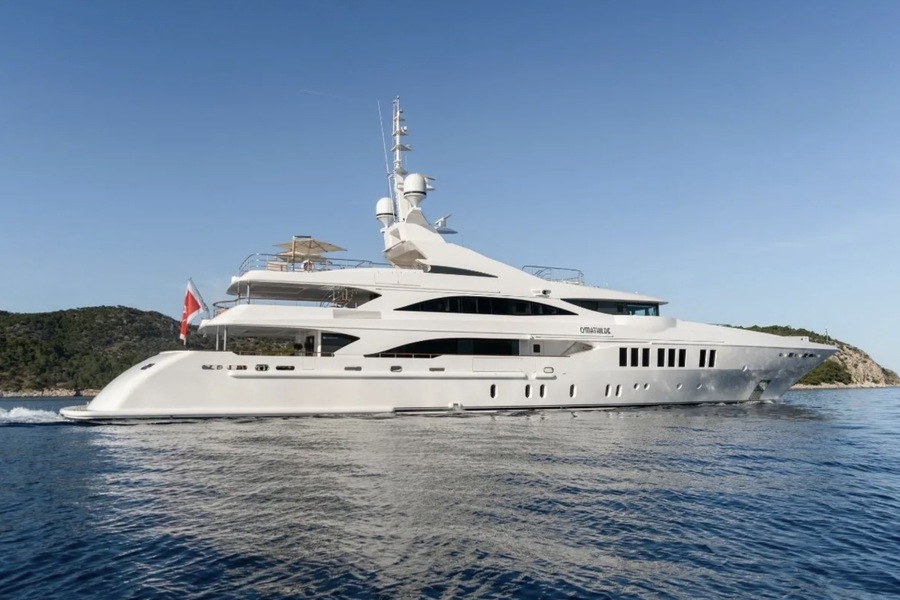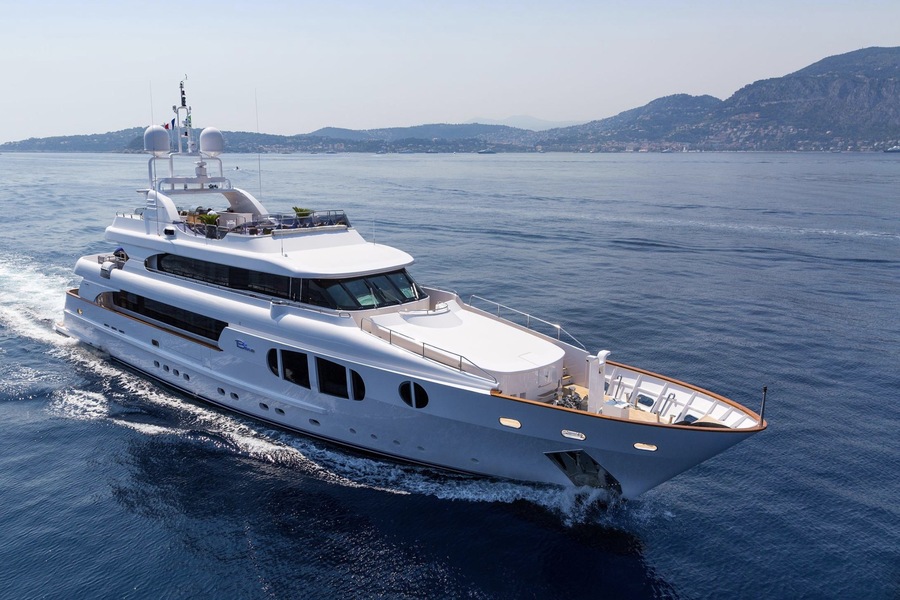The Persian Gulf, a body of water that lies between Iran and the Arabian Peninsula, has long been a region of strategic, economic, and cultural significance. This vital waterway connects the Gulf of Oman, Arabian Sea, and Indian Ocean through the Strait of Hormuz, one of the most critical chokepoints for global oil transportation. Beyond its geopolitical importance, the Persian Gulf is home to a dazzling array of natural beauty, including coral reefs, mangroves, and numerous islands that provide shelter for diverse marine life. Its shores are primarily low-lying, with scenic lagoons, bays, and stretches of golden sand.
Exploring the Persian Gulf offers travelers an opportunity to experience rich culture, incredible landscapes, and an emerging world of tourism. Whether you are looking for a luxurious holiday or a chance to immerse yourself in ancient history, the Gulf countries deliver unique and unforgettable experiences. Rent yacht is one of the best ways to take in the full grandeur of this region, allowing you to traverse its pristine waters, visit remote islands, and marvel at the coral reefs.
Let’s take a journey through some of the Persian Gulf countries, each with its own blend of modernity, tradition, and fascinating attractions.
Saudi Arabia: A Journey into History and Culture
Saudi Arabia, the birthplace of Islam, is home to the holiest cities for Muslims: Mecca and Medina. These cities, however, remain off-limits to non-Muslims. In recent years, Saudi Arabia has opened its doors to global tourism, offering a window into its rich cultural and historical heritage. From ancient ruins to modern cities, this kingdom is a blend of past and present.
Cultural Guidelines for Visitors
Saudi Arabia is a deeply religious country, and travelers must respect its customs and laws:
Travel with a Guide
Foreign tourists must be accompanied by a local guide.
Restricted Items
It is illegal to bring alcohol, bladed weapons, and non-Muslim religious items into the country.
Dress Code
Visitors should wear modest clothing. Both men and women are required to cover their arms above the elbow, and shorts or short skirts are not permitted. Women, regardless of religion, must wear a headscarf.
Photography
Public photography has restrictions, particularly for government buildings and private property. Permission is required before taking photographs of people or landmarks.
Supermarket Rules
Men over 16 years of age can only enter large supermarkets if accompanied by a woman.
Despite these regulations, Saudi Arabia offers unique travel experiences, including:
Madain Saleh
An ancient Nabatean city and a UNESCO World Heritage site, with rock-cut tombs similar to Jordan’s Petra.
Asir National Park
Located near Jeddah, this park features stunning mountains, valleys, and wildlife.
Diving and Falconry
Traditional Saudi pastimes such as falconry and Red Sea diving provide adventure and insight into local culture.

Oman: A Blend of Tradition and Modernity
Oman stands out as one of the most peaceful and welcoming nations in the Gulf region. It is known for its well-preserved cultural heritage, magnificent landscapes, and warm hospitality. Unlike other Gulf states that have rapidly urbanized, Oman has maintained a balance between modernity and its ancient traditions.
Key Attractions and Cultural Etiquette
The country is famous for its stunning fortresses, palaces, and temples, reflecting a rich history of Islamic architecture. Visitors should keep in mind the following cultural guidelines:
Modest Dress
Women should dress conservatively, covering their arms and legs. Open swimsuits are only allowed on private hotel beaches.
Photography
While photography is generally allowed, photographing women is prohibited, and it is necessary to ask for permission from men. Government buildings marked with “No Photography” signs are off-limits.
Customs Regulations
Tourists are allowed to bring 1 liter of alcohol for personal consumption. However, weapons and drugs are strictly forbidden, and prescription drugs must be accompanied by appropriate documentation.
In addition to its cultural landmarks, Oman is a natural paradise:
Wahiba Sands Desert
Known for its golden dunes, it offers an authentic desert experience, including camel rides and camping under the stars.
Musandam Fjords
Often referred to as the “Norway of Arabia,” these fjords provide a dramatic landscape of rocky inlets and crystal-clear waters.
UAE: The Epitome of Luxury and Adventure
The United Arab Emirates (UAE) is a federation of seven emirates, including Dubai and Abu Dhabi, which have become synonymous with opulence and adventure. The UAE’s meteoric rise to prominence is driven by its vast oil wealth and visionary leadership, transforming the region into a hub for business, tourism, and luxury living. While Dubai and Abu Dhabi are the most recognized destinations, the other emirates like Sharjah, Ras Al Khaimah, and Fujairah also offer unique experiences.
What to Expect in the UAE
Dubai
Known for its architectural marvels such as the BurjKhalifa (the tallest building in the world) and Palm Jumeirah (a man-made island), Dubai caters to every type of traveler. You can shop at luxury malls, relax on serene beaches, or embark on desert safaris.
Sharjah
Recognized as the cultural capital of the UAE, Sharjah is home to art galleries, museums, and restored heritage sites.
Abu Dhabi
The capital city offers a mix of luxury and culture, from the stunning Sheikh Zayed Grand Mosque to the futuristic Louvre Abu Dhabi.
For thrill-seekers, the UAE offers:
Skydiving
Leap from a plane and take in breathtaking views of Dubai’s skyline.
Desert Safaris
Experience dune bashing, camel riding, and Bedouin-style camps.
Bahrain: An Island of Heritage and Beauty
Bahrain, the “Island of Pearls,” is a small but vibrant country located in the Persian Gulf. It is a nation of contrasts, blending modern skyscrapers with ancient Islamic traditions. The Al-Fateh Mosque in Manama is a key attraction, one of the largest mosques in the world, able to host over 7,000 worshippers.
Beyond its urban charm, Bahrain is known for:
Pearl Diving
Bahrain was once the world’s pearl capital, and tourists can still explore the country’s pearl diving history through museum exhibits and guided tours.
Qal’at al-Bahrain
This UNESCO World Heritage site is an ancient harbor and fortress, offering insight into Bahrain’s 5,000-year-old history.
Qatar: The Pearl of the Gulf
Qatar has quickly risen to global prominence, becoming a major player in the worlds of sport, culture, and luxury. Home to the 2022 FIFA World Cup, Qatar’s capital, Doha, is a blend of futuristic skyscrapers and traditional souks (markets). Despite its modernity, Qatar holds tightly to its Islamic heritage, and tourists must respect its cultural and religious norms.
Notable Attractions
Khor Al Adaid (Inland Sea)
A natural marvel, this inland sea offers dramatic landscapes where golden sand dunes meet azure waters. Sunsets here are breathtaking, with shades of pink, yellow, and purple lighting up the sky.
Souq Waqif
A traditional market where visitors can buy spices, perfumes, textiles, and handicrafts.
Museum of Islamic Art
Designed by architect I. M. Pei, this museum houses a stunning collection of Islamic art spanning over 1,400 years.

Kuwait: A Hidden Gem in the Gulf
Though Kuwait is often overshadowed by its neighbors, it has a rich history and culture worth exploring. With fewer restrictions on tourists compared to other Gulf countries, Kuwait is a traveler-friendly destination where modest dress and respect for local customs are encouraged.
Highlights of Kuwait
Kuwait City
Home to numerous attractions, including the Kuwait Towers, the Grand Mosque, and a variety of museums and palaces. The Old Seif Palace, with its iconic gold-covered clock tower, is a must-see.
Cultural Experiences
Visitors can explore the Tareq Rajab Museum, which showcases Islamic art and ethnographic artifacts, or enjoy local cuisine at one of the many restaurants in Souq Al Mubarakiya.
The Persian Gulf: Explore its Wonders by Yacht
For an unparalleled experience of the Persian Gulf’s beauty, renting a yacht is an ideal option. Whether you’re sailing along the coastlines of Oman, the UAE, or Bahrain, a yacht rental gives you access to secluded beaches, coral reefs, and unspoiled natural wonders. You can explore hidden lagoons, witness incredible marine life, or simply relax on board with panoramic views of the Gulf.
A yacht adventure through the Persian Gulf provides not just luxury but also a deeper connection with the region’s natural splendor, whether you’re marveling at its coral reefs or enjoying the vibrant sunsets.
Conclusion
The Persian Gulf is a fascinating region that combines natural beauty, rich cultural traditions, and cutting-edge modernity. Each country along its shores offers something unique for travelers, from the ancient ruins of Saudi Arabia to the modern luxury of the UAE. Whether you are exploring bustling cities, ancient fortresses, or pristine beaches, the Gulf is an enchanting destination full of wonder and diversity. Rent a yacht, and let the splendor of the Persian Gulf captivate you on your journey!





